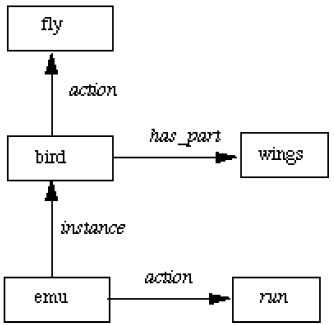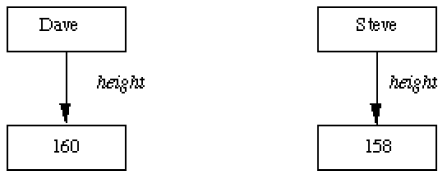Inference In A Semantic Net
Inference in a Semantic Net: Basic inference mechanism: follow links between nodes. Two methods to do this:
Intersection search -- the notion that spreading activation out of two nodes and finding their intersection finds relationships among objects. This is achieved by assigning a special tag to each visited node.
Many advantages including entity-based organisation and fast parallel implementation. However very structured questions need highly structured networks.
Inheritance -- the isa and instance representation provide a mechanism to implement this. Inheritance also provides a means of dealing with default reasoning. E.g. we could represent:
- Emus are birds.
- Typically birds fly and have wings.
- Emus run.
in the following Semantic net:

In making certain inferences we will also need to distinguish between the link that defines a new entity and holds its value and the other kind of link that relates two existing entities. Consider the example shown where the height of two people is depicted and we also wish to compare them.
We need extra nodes for the concept as well as its value.

Special procedures are needed to process these nodes, but without this distinction the analysis would be very limited.
